#gluten and sugar free desserts
Explore tagged Tumblr posts
Text
Sweet Gluten and Dairy Free Desserts Recipes

In recent years, many people have discovered the importance of a gluten and dairy-free diet, whether due to allergies, intolerances, or personal preferences. As awareness has increased, the demand for gluten and dairy-free alternatives especially in the realm of desserts has skyrocketed. Thankfully, sweet gluten and dairy free desserts recipes now abound, offering a wide variety of mouth-watering options. Whether you’re looking for decadent brownies, creamy tiramisu, or a simple, healthy treat, there’s something for everyone. This article will explore everything from the history and variations of gluten and dairy free desserts to their health benefits, preparation tips, and much more.
The History of Gluten and Dairy Free Desserts
Gluten and dairy free desserts are not a modern invention, but their popularity has surged in recent decades. Historically, desserts were often baked with simple ingredients such as flour, butter, eggs, and sugar. However, with the rise of gluten and dairy allergies, as well as intolerances to lactose, many individuals sought out alternative ingredients.
In the past, those with dietary restrictions had limited options when it came to desserts, often feeling left out during family gatherings or celebrations. With the advancement of food science and a growing awareness of dietary needs, chefs and home bakers alike began experimenting with ingredients that could replace gluten and dairy, and thus, gluten and dairy free desserts were born.
Today, many traditional dessert recipes can be easily adapted to be both gluten and dairy-free without sacrificing flavor or texture. Innovations in plant-based milks, gluten-free flours, and sugar alternatives have made it easier than ever to enjoy delicious, allergen-free treats.
Popular Variations of Gluten and Dairy Free Desserts
There are a vast number of variations of gluten and dairy free desserts that cater to different tastes and preferences. Let’s explore some of the most popular options.
1. Gluten and Dairy Free Brownies
Brownies are a classic favorite, and they can easily be made gluten and dairy free desserts by substituting traditional ingredients with alternatives. Gluten-free brownies typically use almond flour, rice flour, or oat flour instead of wheat flour. For dairy-free options, plant-based milk (like almond or coconut milk) and dairy-free butter or oils replace the butter and regular milk.
2. Gluten and Sugar-Free Desserts
For those looking for a healthier alternative, gluten and sugar-free desserts are an excellent choice. By using natural sweeteners like stevia, monk fruit, or coconut sugar, these desserts allow individuals to enjoy a sweet treat without the added sugar. Common recipes include sugar-free cheesecake or coconut macaroons, where the sweetness comes from natural sources instead of refined sugar.
3. Gluten and Lactose-Free Desserts
Lactose-free desserts are perfect for those who are intolerant to lactose but can still consume milk proteins. By using lactose-free milk or dairy substitutes like coconut milk, lactose-free tiramisu or ice creams can be made to offer a creamy, rich dessert experience.
4. Non-Dairy Gluten-Free Desserts
These treats are perfect for people who avoid both gluten and dairy. Non dairy gluten free desserts use alternatives such as oat milk, almond milk, or cashew cream in place of dairy products. They also utilize gluten-free flours like almond flour, coconut flour, or even gluten-free baking blends for a similar texture and consistency as their traditional counterparts.
5. No-Bake Desserts
No-bake gluten and dairy free desserts have become increasingly popular because they’re quick to prepare and often healthier. Options like no-bake vegan cheesecakes, coconut date bars, or raw brownies require minimal effort, and they still pack a punch in terms of flavor and texture.
Key Ingredients in Gluten and Dairy Free Desserts
When preparing gluten and dairy free desserts, it’s essential to know which ingredients to use in place of traditional flour, butter, and milk. Let’s break down some of the key ingredients that make these desserts both delicious and safe for people with dietary restrictions.
1. Gluten-Free Flours
Traditional wheat flour contains gluten, which gives baked goods their structure. To replace gluten, a variety of gluten-free flours can be used. Some popular options include:
Almond flour: A gluten-free, high-protein flour made from finely ground almonds. It adds moisture and a slightly nutty flavor to desserts.
Rice flour: This flour is often used in gluten-free recipes for a light texture. It’s a common base in gluten-free baking mixes.
Coconut flour: This flour is derived from dried coconut meat and absorbs a lot of moisture, so it is best used in combination with other gluten-free flours.
Oat flour: Made by grinding oats into flour, oat flour gives a soft texture to baked goods and is naturally gluten-free if the oats are certified.
2. Dairy Substitutes
For those avoiding dairy, a variety of non-dairy milk options can be used:
Almond milk: A popular dairy-free milk with a mild flavor that works well in most desserts.
Coconut milk: Offers a rich, creamy texture, making it perfect for custards, ice creams, and cakes.
Cashew milk: Creamy and neutral, cashew milk is an excellent alternative to dairy milk in desserts.
Additionally, dairy-free butter or oils (such as coconut oil or olive oil) can be used in place of butter, and coconut cream is a great substitute for heavy cream in recipes like pies or mousse.
3. Natural Sweeteners
Traditional refined sugar is often replaced with natural sweeteners in gluten and dairy free desserts. Some popular options include:
Coconut sugar: Derived from coconut palm sap, coconut sugar has a lower glycemic index than regular sugar.
Maple syrup: A sweet, rich syrup that adds a distinct flavor to baked goods and desserts.
Stevia and monk fruit: These are calorie-free, natural sweeteners that are commonly used in sugar-free dessert recipes.
Preparing and Mixing Gluten and Dairy Free Desserts
Making gluten and dairy free desserts can be just as easy as preparing traditional ones, though the key lies in knowing the right methods of mixing and preparation.
Mixing
When mixing gluten and dairy-free ingredients, it’s important to use the right ratio of dry to wet ingredients to ensure proper texture and consistency. Gluten-free flours often don’t bind in the same way wheat flour does, so using xanthan gum or guar gum (in small amounts) can help improve the structure and prevent crumbliness.
Layering
Layering is often a technique used in desserts like cakes, pies, and cheesecakes. Gluten and dairy-free layers can be made by alternating layers of gluten-free cake or crust with dairy-free fillings. For instance, in a gluten-free dairy-free tiramisu, you could alternate layers of dairy-free mascarpone and gluten-free ladyfingers soaked in coffee.
Flavor
Flavor is essential in any dessert, and gluten and dairy-free options are no exception. Using rich natural ingredients like vanilla extract, cinnamon, cocoa powder, and citrus zest can help elevate the flavor of gluten and dairy-free treats.
Garnishing and Dressing
When serving gluten and dairy-free desserts, garnishing them with fruits, nuts, or dairy-free whipped cream can make them visually appealing and enhance the flavor. Fresh berries, a dusting of powdered sugar, or a drizzle of dairy-free chocolate sauce can make even simple desserts look extravagant.
Health Benefits of Gluten and Dairy Free Desserts
While gluten and dairy-free desserts are primarily made to cater to those with dietary restrictions, they also offer several health benefits. Here are some advantages:
Improved digestion: Many individuals find that removing gluten and dairy helps with digestive discomfort, bloating, and gas.
Lower inflammation: For those with autoimmune conditions, gluten and dairy can be inflammatory. Eating these desserts can help reduce symptoms of inflammation.
Weight management: With healthier alternatives like almond flour, coconut milk, and natural sweeteners, many gluten and dairy-free desserts are lower in calories and healthier fats, which can help in weight management.
Suitable for multiple dietary needs: These desserts often cater to those with various dietary preferences, such as vegans, diabetics, or those on a low FODMAP diet.
Serving Gluten and Dairy Free Desserts
When serving gluten and dairy-free desserts, presentation can make all the difference. Consider serving your treats on beautiful dessert plates with a few sprigs of mint or a dusting of cocoa powder. If you’re hosting a gathering, offering a variety of gluten and dairy-free options can help ensure everyone has something to enjoy.
If you’re looking for convenience, many stores like Tesco offer pre-made gluten and dairy-free desserts, including cakes, cookies, and puddings. If you’re in search of easy-to-make recipes, there are countless online sources offering quick and simple gluten and dairy-free dessert ideas.
Frequently Asked Questions
What Are Some Gluten and Dairy-Free Treats?
Some popular gluten and dairy-free treats include brownies, cakes, cookies, fruit sorbets, and energy balls. All of these can be made with alternatives like gluten-free flour and dairy-free milk.
What Candy is Gluten and Dairy-Free?
Many candies are gluten and dairy-free, including Skittles, Swedish Fish, and certain varieties of gummy bears (such as Haribo).
Is Rice Gluten-Free?
Yes, rice is naturally gluten-free.
Is Chocolate Gluten-Free?
Most pure dark chocolate is gluten-free, but it’s important to check labels for additives or cross-contamination risks.
Are M&Ms Gluten-Free?
M&Ms are generally considered gluten-free, but it’s always a good idea to check the packaging for potential cross-contamination
Which Ice Creams Are Gluten-Free?
Brands like Ben & Jerry’s, Häagen-Dazs, and Breyers offer gluten-free ice cream options. Always check the label for specific flavors that may contain gluten.
Sweet gluten and dairy free desserts are not only a great solution for those with food sensitivities but also offer a healthier way to enjoy indulgent treats. With various ingredients and preparation methods, these desserts cater to a range of dietary needs and preferences. Whether you’re baking gluten-free dairy-free brownies at home or picking up a ready-made dessert from the store, the options are endless. By embracing these creative alternatives, you can enjoy satisfying, delicious desserts without compromise.
For related content, read my article: https://bit.ly/3ZjHmIv
#gluten and dairy free desserts#gluten and dairy free brownies#gluten and sugar free desserts#gluten and lactose free desserts#gluten free dairy free dessert recipes#non dairy gluten free desserts#gluten free and dairy free desserts
0 notes
Text
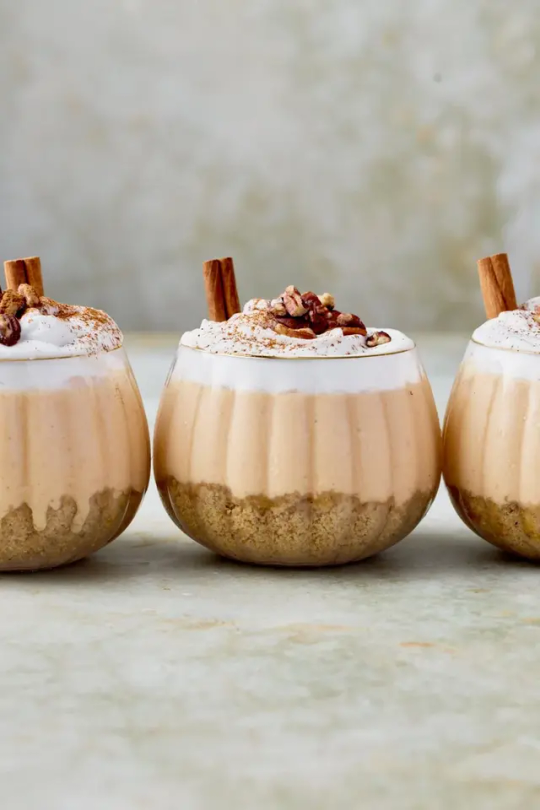
Ultimate No-Bake Pumpkin Cheesecake Recipe (High Protein)
#no bake#pumpkin#cheesecake#protein#recipe#food#dessert#autumn#thanksgiving#healthy#almond flour#nuts#almond#refined sugar free#honey#cottage cheese#yogurt#greek yogurt#pumpkin spice#spice#monk fruit#keto#low carb#gluten free#grain free#healthylittlepeach
215 notes
·
View notes
Text

Hazelnut Dulce de Leche Macarons
#food#recipe#dessert#macarons#dulce de leche#caramel#buttercream#hazelnut#brown sugar#meringue#vanilla#vegetarian#gluten free#baking
243 notes
·
View notes
Text

Double Chocolate Easter Banana Bread Cake (Vegan & Gluten-Free)
#vegan#gluten free#desserts#cake#banana bread#easter#cacao#banana#plant milk#peanut butter#vanilla#olive oil#chocolate chip#coconut sugar#frosting#vegan butter#vegan cream cheese
215 notes
·
View notes
Text

🌈
#wheatfreemom.com#fudge#confetti#white chocolate#birthday cake#baking#dessert#sweets#sugar#food#edible#wheat free#gluten free
49 notes
·
View notes
Text
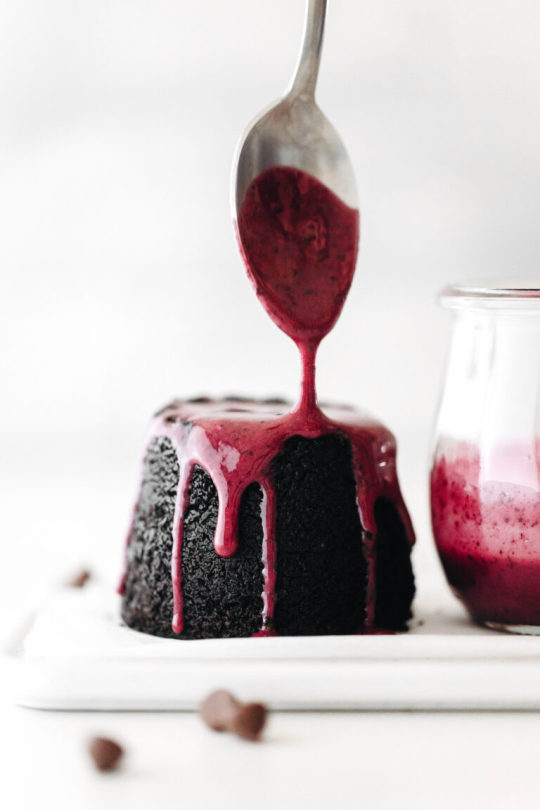

Single Serve Blueberry Brownie (via Feasting on Fruit)
#gluten free#gf food#gluten free foods#dairy free#vegan#egg free#dessert#chocolate#blueberries#small batch#sunbutter#oat flour#coconut sugar#feastingonfruit
276 notes
·
View notes
Text

Chocolate Tahini Brownie Skillet
#dessert#desserts#sweet#tahini#chocolate#brownie#brownies#skillet#recipe#recipes#chocolate chip#almond#almonds#glutenfree#gluten free#coconut sugar#vegan#veganism#vegetarian#foodporn#soy free#food
16 notes
·
View notes
Text
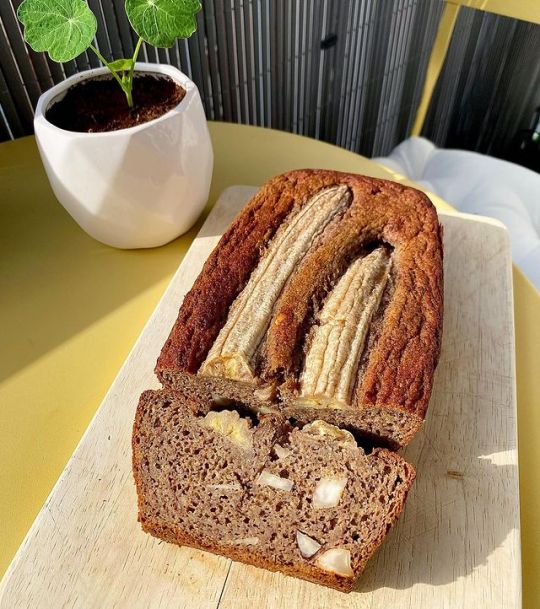
gluten free banana bread from @marionseregale on ig
recipe in link (recipe is in french)
21 notes
·
View notes
Text
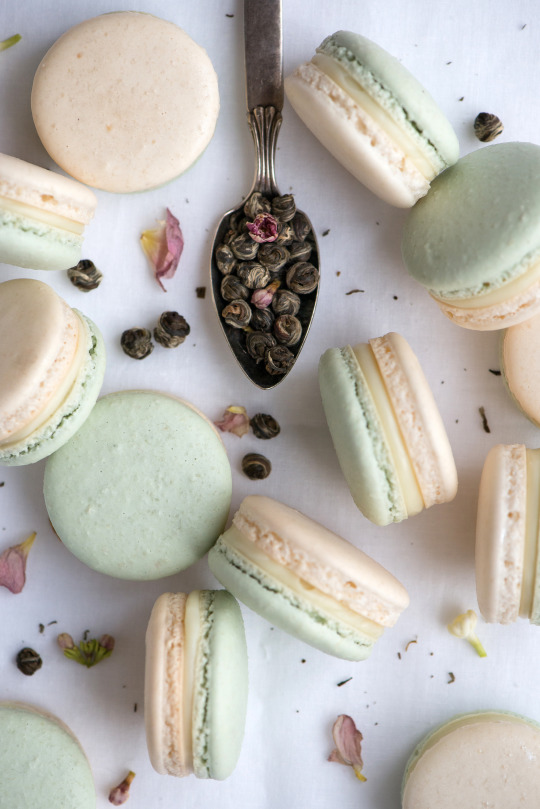
Jasmine Apricot Macarons
150g almond flour, ground fine
150g confectioners sugar
55g egg whites, one day old, room temperature
gel or powdered food coloring of your choice
55g egg whites, one day old, room temperature
150g granulated sugar
38g water
Jasmine White Chocolate Ganache & Apricot Vanilla Bean Confiture:
365g white chocolate 33%
156g heavy cream
10g jasmine pearl tea
40g unsalted butter, soft
4 oz. apricot vanilla bean confiture (If using store-bought or homemade apricot preserves, add ½ vanilla bean, seeds scraped).
Macarons:
Sift together the confectioners sugar and almond flour, in a medium sized bowl. Add the first portion of egg whites, but do not stir.
In a stand-mixer bowl, with a whip attachment, add your second portion of egg whites.
In a small pot, bring the water and sugar to a boil until it reaches 118C (244F) . Be careful not to splash any sugar-water on the sides of the pot to prevent crystallization. If you do, use a small pastry brush dipped in cold water to brush down the sides of the pot. When the syrup reaches 110C (230F), simultaneously begin whipping the second portion of egg whites to soft peaks.
When the syrup reaches 118C (244F), gradually, in a steady stream, pour the hot mixture into your whipping egg whites (set your mixer speed to medium-low and pour the syrup down the side of the bowl to keep it from being sprayed on the sides of the bowl by the whip). Turn up your mixer speed to medium-high and allow the meringue to whip and cool down to at least 50C. Meanwhile, combine your first portion of egg whites with the almond flour and confectioners sugar. If using, add your food color now and mix until the desired color is achieved. You will want to go darker with the color since the white meringue will lighten the finished color.
Fold your meringue into the almond-sugar mixture, in three additions. Add your first third, fold it to loosen the almond-sugar mix. No need to be gentle at this stage, as you want to fully incorporate the meringue into it so that it is easier to fold in the remaining meringue. Add your second third, this time folding gently, until you see no white meringue streaks. Add your last third, folding gently, until you see no white meringue streaks. At this point, you may add any additional food coloring that you’d like if you need to adjust the final color.
Now, check the consistency of your macaron batter. You want a glossy batter that resembles slightly runny cake batter. It should flow down nicely and with few breaks from your spatula when you hold it up high over the bowl. When the batter falls into the bowl, it should smoothly flow back into the batter in a matter of seconds. If it does not, simply give it a few more gentle folds and recheck your batter. Slowly, keep doing this until your reach the desired consistency.
Line a large sheet pan, with parchment paper or a Silpat. Prepare a large piping bag, with a small plain round tip, and pour in your macaron batter. Hold the piping bag vertically and begin piping 3/4″ to 1″ round shells onto your sheet pan, spacing them about 1/2″ apart. Once you have piped an entire tray, lift up the tray and rap it lightly on your work surface. This act will remove any air bubbles and help prevent them from bursting in the oven. Set aside for 30 minutes to allow a skin to form on the surface. The batter should not stick to your finger when lightly touched.
Preheat your oven to 163C (325F). Bake for 12 minutes, until the tops are set and don’t wiggle when you gently push them to the side. Remove shells from the oven and slide the parchment or Silpat onto a cool work surface. Allow them to cool completely.
Carefully, remove the shells from their surface and begin pairing the sizes up. They are now ready to be filled.
Filling:
Melt your white chocolate in small stainless-steel bowl set over a small pot of simmering water (double boiler). Remove from heat when it is just melted. Wipe any water off the bottom or your bowl carefully and do not to allow any water to touch the chocolate or it will seize up.
In a small saucepan, add the cream and bring to a simmer. Remove from heat and add tea pearls. Cover and steep for 5 minutes. No longer or it will become bitter.
Strain the steeped cream into a clean bowl and rescale cream back to its original amount. Discard tea pearls.
Pour steeped cream over the melted chocolate and using an immersion blender, combine the two. You may also use a spatula to combine the mixture, starting with small circles in the center and working your way out to the sides of the bowl to create a smooth emulsion. The ganache will thicken, become shiny, and develop a puddinglike consistency. Add the butter and incorporate with the immersion blender or stir in thoroughly.
Allow the ganache to cool and crystallize until the consistency is able to hold its shape, up to two hours or overnight. Place ganache and apricot confiture into separate piping bags, with the tips snipped off. Pipe a ring of ganache around the edge of the macaron shell and then pipe the confiture into the small gap in the center. Place on the paired-up “top” to the macaron, press gently until the filling reaches the edge of the macaron. Continue until all pairs are filled.
Place the filled macarons side by side on a tray, cover with plastic wrap, and refrigerate for 24 hours before serving. Remove them from the fridge two hours before serving to be enjoyed at the the ideal temperature.
#angelkin#food#dessert#cookie#gluten free#nuts#almond#powdered sugar#egg#chocolate#heavy cream#tea#jasmine tea#butter#fruit#apricot#vanilla#cloudkin#dogkin#dollkin#dragonkin#elfkin#galaxykin#ghostkin#kitsunekin#phoenixkin#succubuskin#tricksterkin#spring
80 notes
·
View notes
Text



P I N G Ü I N O S *Gluten free,low sugar. *Flours: Rice & Sago. *Marshmallow: Italian meringue with allulose. *Chocolate coating: Cacao 70%.
4 notes
·
View notes
Text
Strawberry Penna Cottas - 130 kcal/5g protein
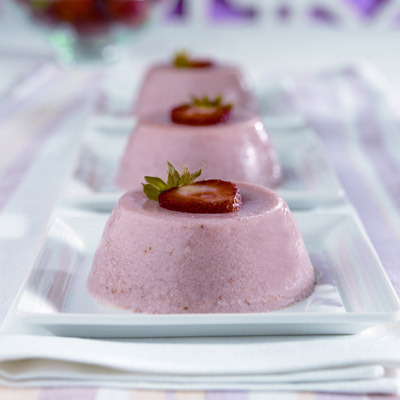
Servings: 4 - 130 kcal/5g protein per serving
1-1/2 cups whole milk
1-1/2 teaspoons unflavored gelatin
1-1/2 pints strawberries, halved
2 tablespoons Splenda No Calorie Sweetener, Granulated
1 teaspoon vanilla extract
1 pint strawberries, sliced
Sprinkle gelatin over milk in a small saucepan; let stand 1 minute. Cook over low heat, stirring until gelatin dissolves (do not boil). Set aside to cool.
Process 1-1/2 pints strawberries in a food processor, or until pureed, stopping to scrape down sides. Press strawberries through a fine wire-mesh strainer into a bowl, discarding solids. Stir cooled milk mixture into strawberry puree. Add Splenda Granulated Sweetener and vanilla, stirring until Splenda Granulated Sweetener dissolves.
Coat 4 (6-ounce) ramekins with cooking spray. Divide strawberry mixture evenly among ramekins. Cover each ramekin with plastic wrap; refrigerate 4 hours or overnight until panna cottas are set.
Run a knife around the edge of each panna cotta and unmold onto serving plates. Serve with sliced strawberries.
#low cal food#low calorie food#low cal recipe#low calorie recipe#low cal dessert#low calorie dessert#strawberry#berries#diabetic friendly#diabetic recipes#valentines#light dessert#light receipe#skinny recipe#skinny dessert#gluten-free#under 200 calories#under 300 calories#sugar free#sugar substitutes#splenda
71 notes
·
View notes
Text
KETO YOGHURT CREAM WITH CRUMBLE
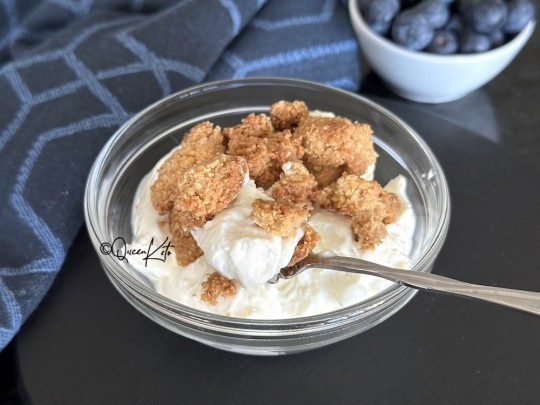
Keto Yoghurt Cream with Crumble. 3.8g carb per serving.Two delights in one. A delicious Yoghurt-based Cream fluff and a fabulous Crumble Topping.The Crumble is ready for baking in 10 minutes. The Yoghurt Cream fluff takes 5. Serving takes 10 seconds. Devouring it...well, that's up to you. I literally inhale mine.Not a fan of Crumble topping? No worries. The Yoghurt Cream fluff is delightful on its own (or with a few berries). Read the full article
#sugar-free#cream fluff#crumble#crumble topping#keto dessert#gluten-free#greek yoghurt#keto#low-carb#low-oxalate#lower-calorie
2 notes
·
View notes
Text

Apple Crisp
#apple#crisp#food#autumn#fruit#dessert#oats#oatmeal#cinnamon#nutmet#kids#spice#recipe#brown sugar#ginger#cloves#gluten free#butternutbakeryblog
287 notes
·
View notes
Text

No-Churn Vietnamese Coffee Ice Cream with Boba
348 notes
·
View notes
Text

Vegan Banana Pudding Bites (Gluten-Free)
#vegan#gluten free#desserts#banana pudding#banana#vanilla wafers#cookies#vegan yogurt#vanilla#coconut sugar#whipped cream
34 notes
·
View notes
Text
Chocolate Sapote Pie
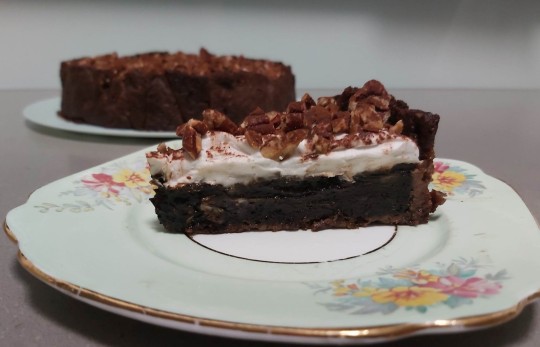
Hey 3WD, why are you making a vegan, gluten-free, no-processed-sugar dessert? Well, you see, I have friends with many, many allergies and felt like a challenge.
This recipe is an experiment with Black Sapote (also called Chocolate Pudding Fruit) – a seasonal persimmon relative that’s high in Vitamin C and has a pudding-like flesh with mild chocolate and caramel notes. While limited availability of Sapotes means it’s not as accessible as something like Chocolate Avocado Pie, it’s a fun thing to play with if you like poking around with the weird fruit section of produce markets (as a bonus, Black Sapotes were selling for $1-2 per fruit both times I visited).
Let's get cooking:
Kitchen equipment
Blender/food processor
Beaters (hand-crank or electric)
20cm (8 inch) springform cake tin
Baking/ Greaseproof paper
Fridge & Oven
Fine mesh sieve (or tea strainer)
Mixing bowls, spatula, knives, spoons etc.
Prep-time
Bench work: approx. 40 minutes
Oven time: approx. 30 minutes
Cooling time: approx. 2-3 hours (minimum)
Coconut cream chill time: 12 hours (minimum)*
*Coconut cream needs to be refrigerated for 12 hours in order to separate properly before whipping. Put your cream in the fridge the night before.
Ingredients

Pie crust
300g (10.5 Oz) pecans
4 large medjool dates (seeds removed, roughly chopped)
1 tsp salt
4 tbsp (approx. 60g/ 2 Oz) margarine, melted
Filling
2 large, ripe Black Sapotes*
1/2 cup (125mL) cocoa powder
4 large medjool dates (seeds removed, roughly chopped)
1/2 tsp salt
1 tsp espresso powder
1 tsp vanilla extract
*Black Sapotes are ripe when the skin has darkened to a dull green-brown and the fruit is very soft to the touch (it will look and feel over-ripe).
Topping
One 400mL (13.5 Fl Oz) can high-quality full-fat coconut cream*
1/2 tsp salt
1 tsp vanilla extract
Approx. 80g (3 Oz) pecans, toasted** and crumbled
Cocoa powder for dusting
*Use a premium quality coconut cream – the difference in price is very small and cheaper creams may not separate properly, which will stop them from whipping up. **Toast pecans by baking in a preheated 140°C/248°F (fan forced) oven for 15-30 minutes until done to your liking.
Instructions
Pie crust (Inspiration recipe)
Preheat oven to 180°C/350°F (fan forced).
Line the base and sides of the spring form pan with baking paper. (Try to minimise wrinkles/folds in the paper lining – this will make it easier to remove the crust later.)
Place chopped dates, pecans and salt into a blender. Blend until the mixture has the texture of breadcrumbs/ almond meal.
Stream in melted margarine and blend until completely combined (crumbs should stick together when pressed)
Press mixture into a firm, even layer across the base and up the sides of the spring form tin, using clean hands or the back of a spoon to smooth down.
Bake for 10-12 minutes or until the crust begins to brown. (Watch closely after the 8-minute mark to prevent burning).
Remove from oven. If the crust has puffed up, press back down using the back of a spoon. (Tip: use a toothpick or fork to gently pop any large air-pockets in the base.)
Cool on a wire rack or heat-safe cutting board until the crust reaches room temperature.
Filling (Inspiration recipe)
Preheat oven to 180°C/350°F (fan forced).
Cut open the Black Sapotes. Remove the seeds and scoop/scrape the flesh out with a spoon. (Note: because Black Sapote skin is very thin and soft when ripe, it cannot be traditionally peeled.)
Transfer one quarter of the fruit flesh to a blender, along with the chopped dates. Process until completely smooth.
Transfer the sweetened sapote mixture into a bowl alongside the remaining sapote flesh. Mix until completely combined (use your spoon or spatula to break down any lumps or fibers in the fruit flesh).
Fold in the cocoa powder, expresso powder, vanilla and salt until completely combined. Taste for flavouring and adjust with more cocoa/vanilla/espresso/salt as desired. (Note: adding cocoa will increase the bitterness of the filling alongside the chocolate-y flavour. This can be hard to counteract without adding sugar or blending in more dates so be careful how much you add at once.)
Transfer filling into your pre-prepared pecan crust. Smooth the top with a spoon or spatula.
Bake for 20 minutes or until the filling is lightly firm to the touch.
Cool completely on a wire rack or heat-safe cutting board, then cover and transfer to the fridge until chilled through.
Cream Topping (Inspiration recipe)
Chill coconut cream for at least 12 hours.
Remove coconut cream from the fridge (Note: DO NOT Shake).
Use a spoon to scoop out the thick cream that has risen to the top, leaving the watery parts behind. (The more water is in your cream, the less firmly it will whip). Transfer the thick cream to a bowl. (Tip: have an extra jar of chilled cream on hand in case the cream yield from the first tin is low)
Add the vanilla and salt to the cream. Stir through, then taste test and adjust the vanilla/salt as needed. (Note: Like with plain dairy cream, this should taste more neutral than sweet).
Beat your cream, starting on a slow speed. Gradually increase speed until whipped to thick, semi-stiff peaks. (Tip: if your cream is very soft to start with, try covering and chilling in the refrigerator to help it firm up.)
Remove the chilled sapote tart from the spring form pan. (Optional: If the sides of your pecan crust are much taller than your filling, you can use a pair of clean, sharp kitchen scissors to trim it down. Use a clean hand to shield the pie filling from any falling crust-crumbs).
Spoon the whipped cream onto the sapote filling, using the back of the spoon to make decorative swirls. (Optional: use a piping bag with a decorative nozzle for a fancier top).
Sprinkle the cream with crumbled pecans. Dust with cocoa powder using a fine sieve or tea-strainer. (Note: Add the nuts first - otherwise the cocoa powder will prevent them from sticking to the cream, causing them to roll everywhere when the pie is cut).
Return to the fridge until the coconut cream is completely chilled.
Serve.
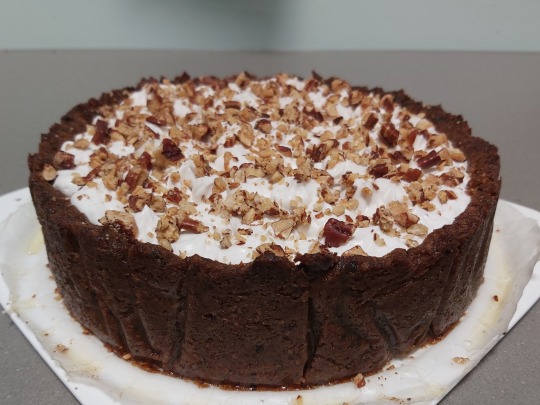
#Chocolate pie#Black Sapote#Baking#Vegan#Gluten Free#Low Sugar Baking#Keto/Raw Baking#(kind of)#citrus free#for my friends#(you know who you are 😉)#this is a test recipe so feel free to make adjustments#I documented my process and adjustments while baking it - this recipe is based on the refined end-notes#I know some people object to putting salt in dessert bakes but it *is* important here#both to balance and enhance the chocolate-y-ness of the filling#AND to keep the coconut cream under control so it doesn't completely dominate every other flavour in the pie#Don't skimp on the salt#3WD Cooks
4 notes
·
View notes